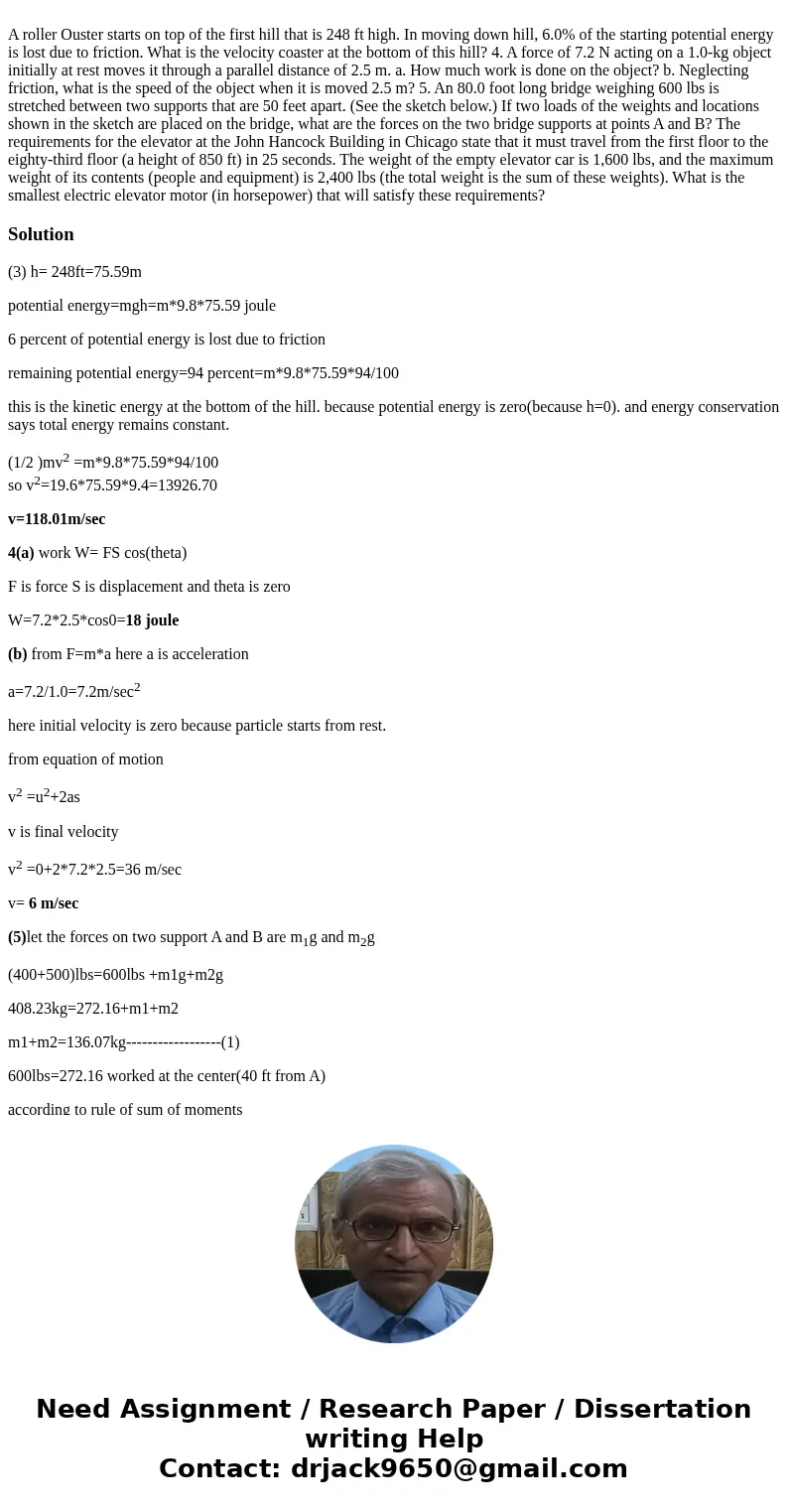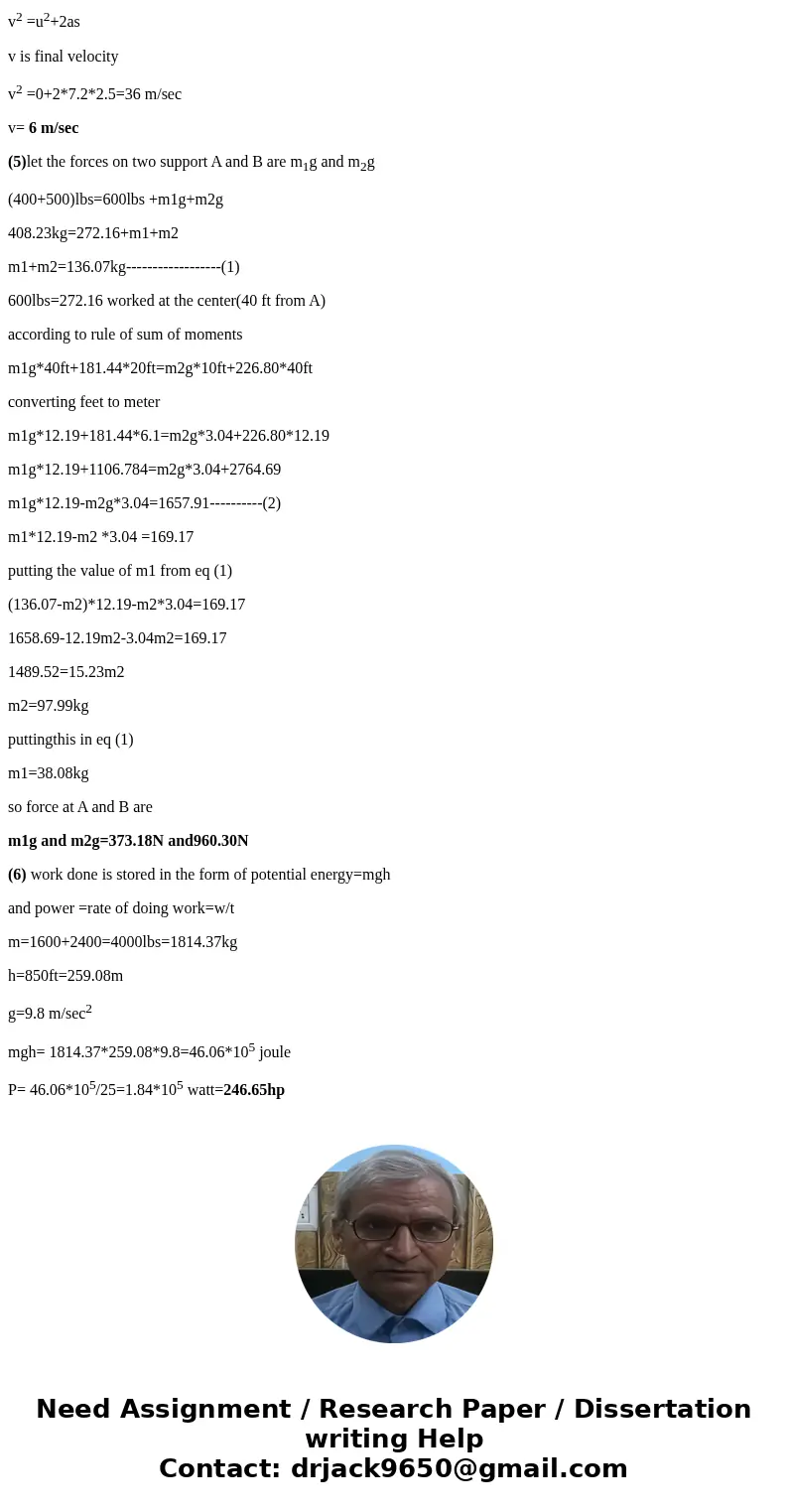A roller Ouster starts on top of the first hill that is 248
Solution
(3) h= 248ft=75.59m
potential energy=mgh=m*9.8*75.59 joule
6 percent of potential energy is lost due to friction
remaining potential energy=94 percent=m*9.8*75.59*94/100
this is the kinetic energy at the bottom of the hill. because potential energy is zero(because h=0). and energy conservation says total energy remains constant.
(1/2 )mv2 =m*9.8*75.59*94/100
so v2=19.6*75.59*9.4=13926.70
v=118.01m/sec
4(a) work W= FS cos(theta)
F is force S is displacement and theta is zero
W=7.2*2.5*cos0=18 joule
(b) from F=m*a here a is acceleration
a=7.2/1.0=7.2m/sec2
here initial velocity is zero because particle starts from rest.
from equation of motion
v2 =u2+2as
v is final velocity
v2 =0+2*7.2*2.5=36 m/sec
v= 6 m/sec
(5)let the forces on two support A and B are m1g and m2g
(400+500)lbs=600lbs +m1g+m2g
408.23kg=272.16+m1+m2
m1+m2=136.07kg------------------(1)
600lbs=272.16 worked at the center(40 ft from A)
according to rule of sum of moments
m1g*40ft+181.44*20ft=m2g*10ft+226.80*40ft
converting feet to meter
m1g*12.19+181.44*6.1=m2g*3.04+226.80*12.19
m1g*12.19+1106.784=m2g*3.04+2764.69
m1g*12.19-m2g*3.04=1657.91----------(2)
m1*12.19-m2 *3.04 =169.17
putting the value of m1 from eq (1)
(136.07-m2)*12.19-m2*3.04=169.17
1658.69-12.19m2-3.04m2=169.17
1489.52=15.23m2
m2=97.99kg
puttingthis in eq (1)
m1=38.08kg
so force at A and B are
m1g and m2g=373.18N and960.30N
(6) work done is stored in the form of potential energy=mgh
and power =rate of doing work=w/t
m=1600+2400=4000lbs=1814.37kg
h=850ft=259.08m
g=9.8 m/sec2
mgh= 1814.37*259.08*9.8=46.06*105 joule
P= 46.06*105/25=1.84*105 watt=246.65hp


 Homework Sourse
Homework Sourse